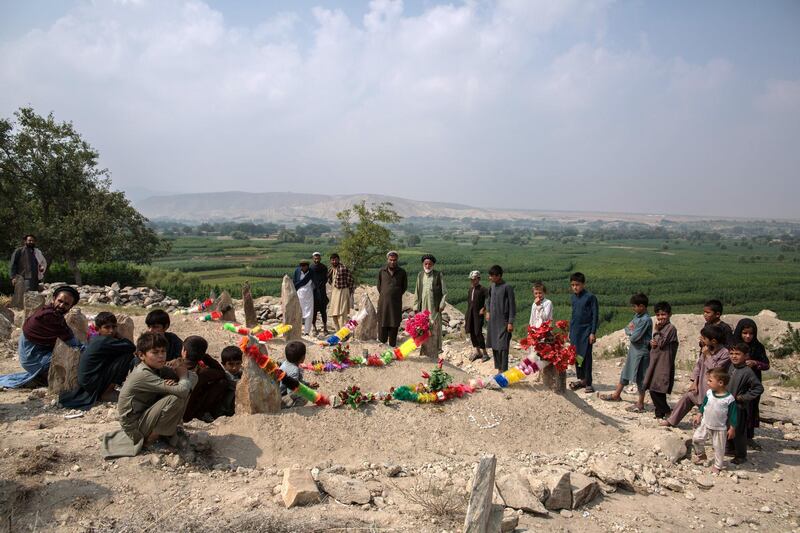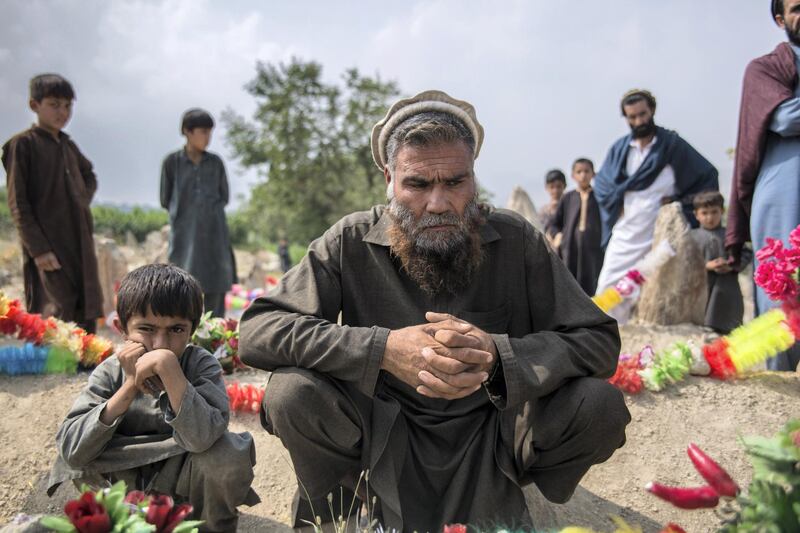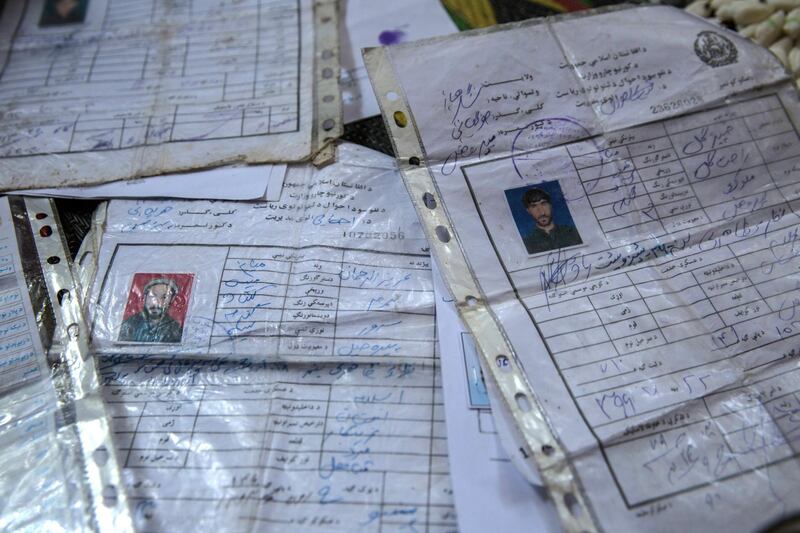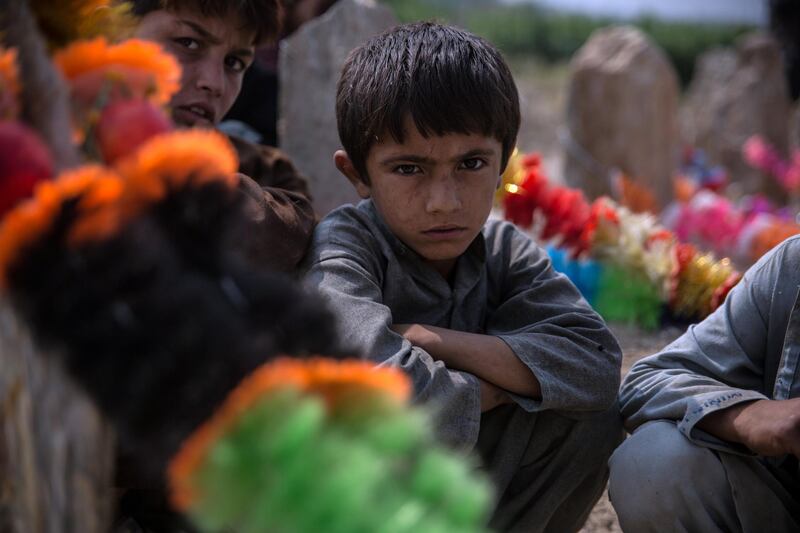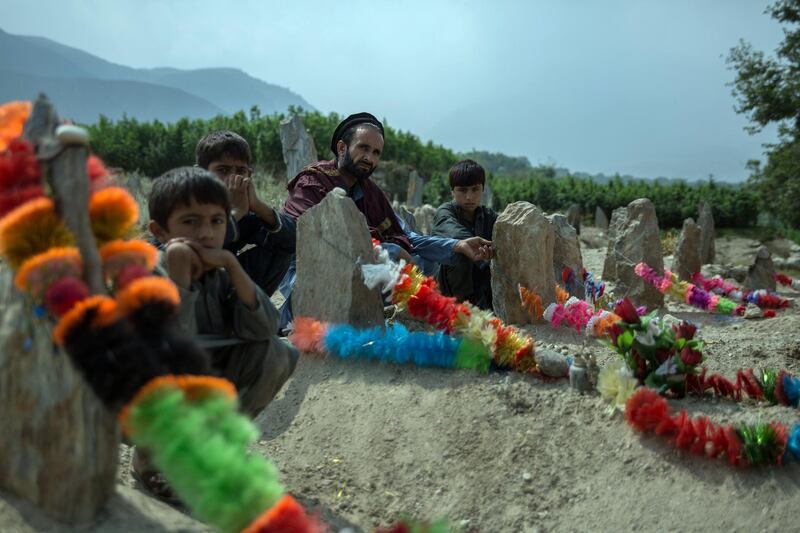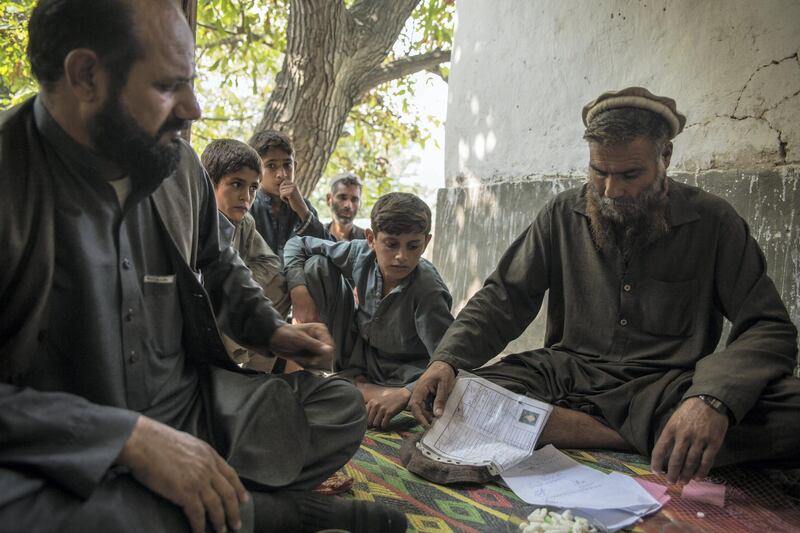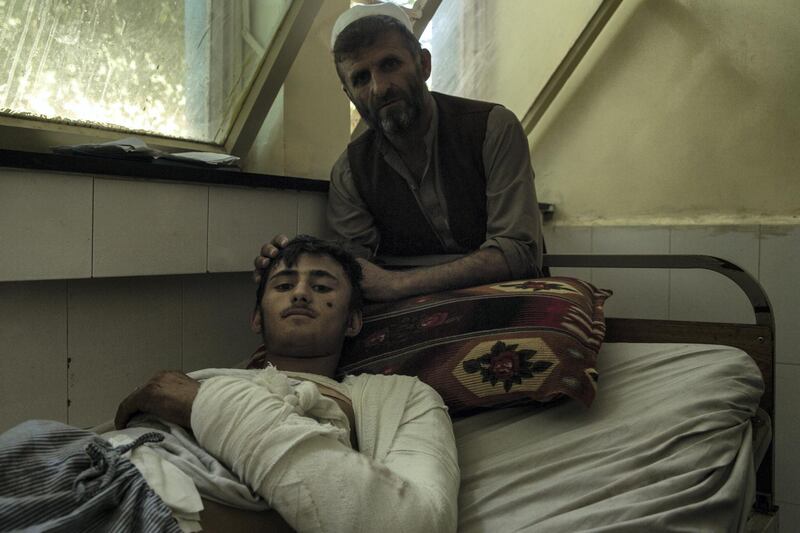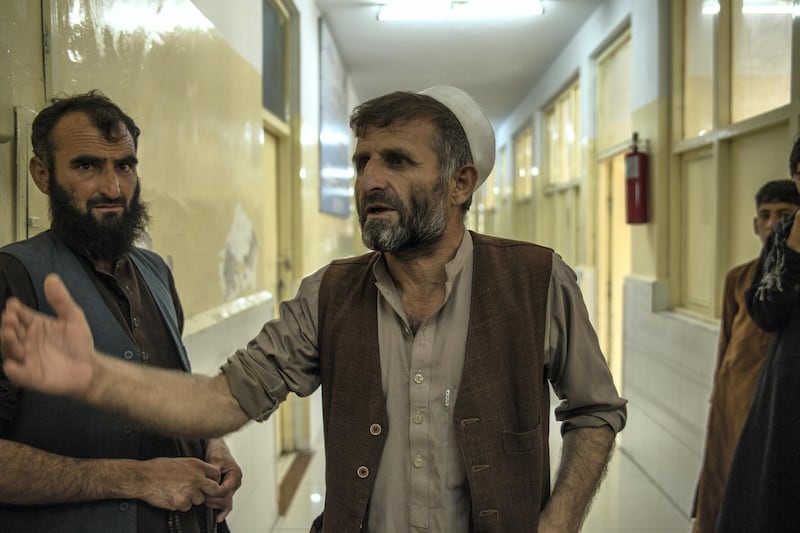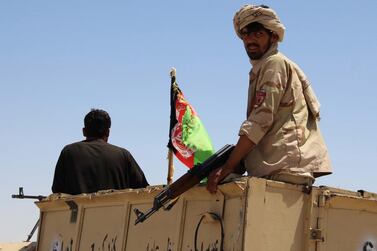Rahat Gul closes his eyes, replaying in his mind the moment that changed his life: seeing his son’s blood-drenched body carried to him by a neighbour.
Mr Gul, 45, had gone to bed content, happy that Khyber, 25, had just landed a job harvesting pine nuts. He woke up to dig him a grave.
A week later the tall, broad-shouldered Pashtun man sits and stares blankly in silence beside one of Khyber’s seven children, eight-year-old Lal Agha. Suddenly, he takes a deep breath and covers his face with a scarf, hiding his tears, as Lal Agha burrows his face in his grandfather’s arm, both of them overwhelmed by the pain of their loss.
On the night of September 19, a US drone strike killed in at least 30 pine nut harvesters in Nangarhar province in eastern Afghanistan after accidentally targeting the group of about 150 workers instead of an ISIS hideout. Forty others were injured in the attack in Khogyani district.
Mr Gul says it was his son’s third day of work. “He could have come home for the night, but he was among friends and cousins. I imagine they were having a good time together.” The family lives in Javari village, just a 30-minute walk from the attack site.
Khyber and six cousins, most of them around 18 years old, returned to Javari the morning after the attack, their lifeless bodies laid to rest a few paces behind Mr Gul’s home.
The other dead were from elsewhere in Nangarhar or other provinces such as Kunar, Laghman, Khost.
“This is the front line,” Mr Gul says, “we are victims of all sides. We often hear explosions and shooting. This area has changed hands many times. A few years ago, it was under Taliban control, now it is back with the government, but Daesh is moving in closer.
“But the ‘kharijan’,” he says, referring to the Americans by the Farsi word for foreigners, “they have brought us the biggest pain. Our hearts are broken. Life has lost its taste.”
The drone strike was confirmed by Afghanistan’s defence ministry, while the spokesman for US forces in Afghanistan, Col Sonny Leggett, said it was being investigated. “We are aware of allegations of the death of non-combatants and are working with local officials to determine the facts,” he said.
According to UN figures, more than 4,000 civilians have been killed or injured in Afghanistan this year, with the Afghan military and the US forces supporting them accounting for more deaths than the insurgent groups.
Despite living on the front line for many years, this is the first time Mr Gul’s family has been struck by the war personally. Shrieks and sobs from Khyber’s wife Amira, 25, echo from the hollow mud-brick walls of their home.
“We’re sad and angry, but what can we do? We wouldn’t even know where and how to file an official complaint. We’re powerless,” Mr Gul says.
“The area that was hit is controlled by Daesh, but that doesn’t mean that only militants live there,” says Takra Rahimsey, head of the Khogyani branch of the National Directorate of Security – Afghanistan’s intelligence agency. “It’s farmland and many farmers go there to work. Much of the trees are owned by independent businessmen who live far away.”
“It was an accident and we’ll never see justice for it,” says Mohammed Hassan, 40, another resident of Javari whose son, Erfan Kamal, was injured in the drone strike.
Kamal, 18, lies in a bed in Sehat Omar Hospital in Jalalabad, Nangarhar’s provincial capital about an hour’s drive from the village, first on unpaved roads through flat highlands, then through busy market towns.
He has a fractured skull and burns on his arms and feet, but is one of the luckier victims. Three friends who arrived with him were burnt so severely that no hospital in Nangarhar could treat them and they were immediately transferred to Kabul and Peshawar – both cities about a two-hour drive from Jalalabad in opposite directions. Four others were declared dead on arrival.
“We’ve heard planes circling above during the day, but we didn’t think anything of it,” Kamal recalls. “The blast came suddenly ... We were all asleep. In the dark, I could make out torn bodies, and those who were alive were screaming, covered in blood.
“I still don’t know who all has died,” he adds quietly.
It was only his second day on the job, which paid 700 Pakistani rupees (Dh16) per bag of harvested pine nuts. Rupees are used in the area rather than the Afghani because of its proximity to Pakistan. He had turned in two full bags on his first day.
Kamal now needs cranial surgery that his family cannot afford and no doctor in the hospital is willing to attempt. An open wound on his forehead could lead to a brain infection. A plastic bag is wrapped around one of his feet to catch the liquid seeping out from his wounds.
His father says the hospital costs have already reached 100,000 rupees.
“My brother worked for the Americans during their Tora Bora operation. Last year, the Taliban killed him for it. This year, the US has almost killed my son,” Mr Hassan says, his voice rising.
“The farmers – they were all young! Some had just finished school and started their first jobs. Why don’t they help us now, these kharijan? If they were to apologise and offer help, we would welcome them in our village.”
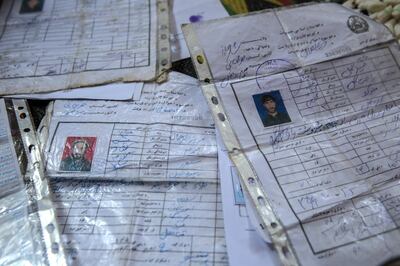
There are two roads to Javari from Jalalabad. One often has checkpoints set up by the Taliban, who also lay mines by the roadside. The other, rocky and unpaved, passing countless cannabis fields, sits along a government-ISIS front. Though government-held, war is a daily reality in Javari.
Two of the seven new graves in the village are of Habib Rahman's brothers. Sitting at Mr Gul’s home, Mr Rahman, 37, shows their “taskeras”, the document that serves as a birth certificate and an identity card.
“We used to be six brothers, now we are four,” he says.
Mr Gul and other villagers come forward with the taskeras of their relatives. The papers are laid out on the ground, a photo clipped to each one. Lost brothers, fathers, sons.
